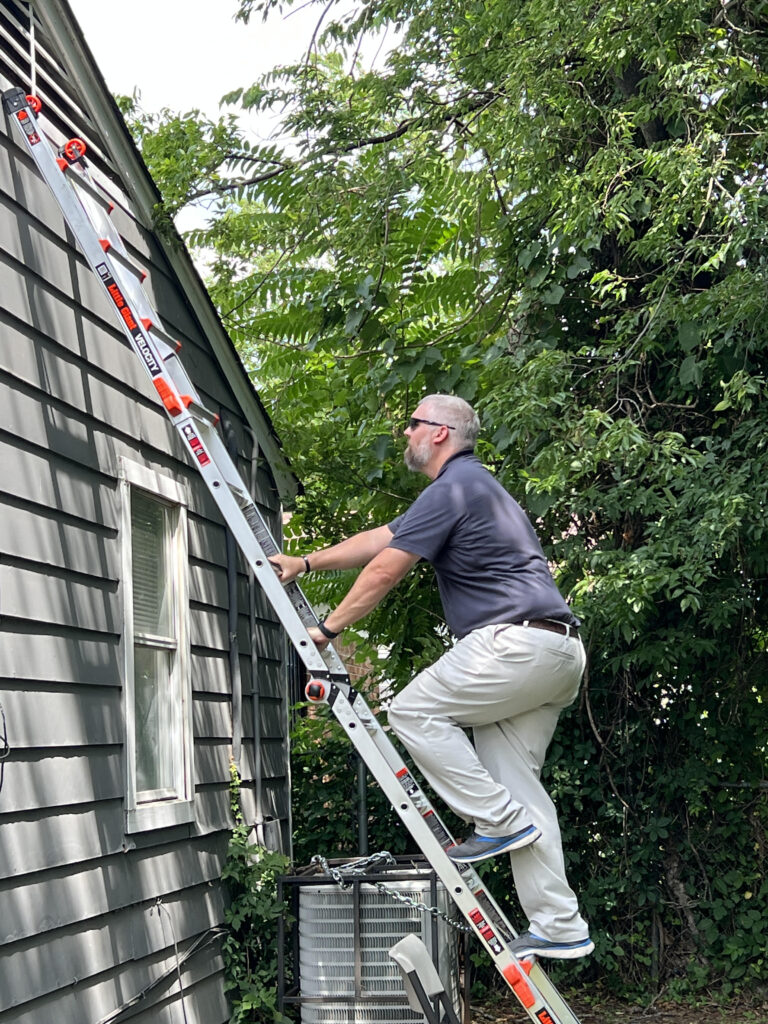Ladders are versatile tools that we often take for granted in our homes. Whether you’re reaching for that dusty old cookbook on the top shelf or attempting a DIY project, a ladder can be your best friend. However, when not used properly, ladders can quickly turn from friends into foes. In this blog post, we’ll explore the importance of ladder safety at home and provide you with some crucial tips to ensure you ascend safely to complete your tasks.
- Choose the Right Ladder
The first step in ensuring ladder safety is choosing the right ladder for the task at hand. Ladders come in various types, including step ladders, extension ladders, and platform ladders. Consider the height you need to reach and the stability required for your project. Always opt for a ladder that is tall enough without overextending, and one that can support your weight comfortably.
- Inspect Your Ladder
Before you start climbing, perform a thorough inspection of your ladder. Check for any visible damage, such as bent rungs or cracked steps. Ensure that all the bolts, hinges, and locks are secure. If your ladder is damaged or shows signs of wear and tear, do not use it until it’s repaired or replaced.
- Set Up on Solid Ground
Proper ladder placement is crucial for stability. Always set up your ladder on a firm and level surface. Avoid placing it on uneven ground, soft soil, or any surface that can shift easily. If you must use a ladder on an unstable surface, consider using ladder levelers or stabilizers to ensure a secure footing.
- Maintain a 3-Point Contact
One of the fundamental rules of ladder safety is to maintain three points of contact at all times. This means either both feet and one hand or both hands and one foot should be in contact with the ladder and/or the structure you’re working on. Avoid overreaching, which can lead to instability and accidents. If you can’t reach your work area comfortably, climb down and reposition the ladder.
- Use Ladder Accessories
Ladder accessories, such as ladder stabilizers, standoff arms, and ladder trays, can enhance your safety and productivity. These add-ons provide additional stability and a convenient platform for tools and materials, reducing the need for overreaching.
- Mind the Weight Limit
Every ladder comes with a weight limit specified by the manufacturer. Exceeding this limit can compromise the ladder’s structural integrity and lead to accidents. Ensure that you and your tools together do not exceed the ladder’s weight capacity.
- Avoid Distractions
When you’re on a ladder, your focus should be solely on the task at hand. Avoid distractions, such as talking on the phone, texting, or watching TV. A momentary lapse in concentration can have serious consequences.
- Climb Safely
When climbing or descending a ladder, always face the ladder and maintain a firm grip on the rungs or side rails. Keep your body centered between the side rails, and never lean too far to one side.
- Store Ladders Properly
When you’re done using your ladder, store it in a safe and dry place. Ensure it’s secured to prevent unauthorized access, especially if you have children at home.
Conclusion
Ladder safety is not something to be taken lightly, whether you’re a seasoned DIY enthusiast or an occasional user. By following these essential safety tips, you can minimize the risk of accidents and injuries at home. Remember, it’s always better to take a little extra time and precaution to ensure your safety while ascending those rungs. So, the next time you need to reach for the stars or simply change a light bulb, make sure you’re climbing the ladder of safety as well.


